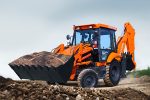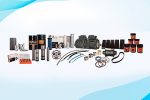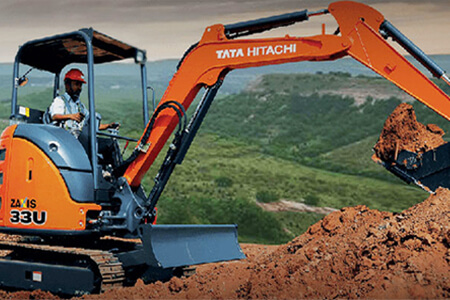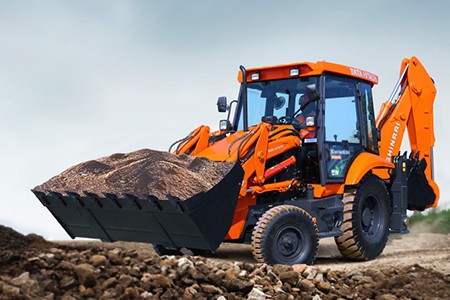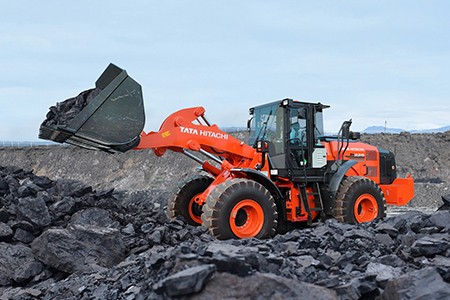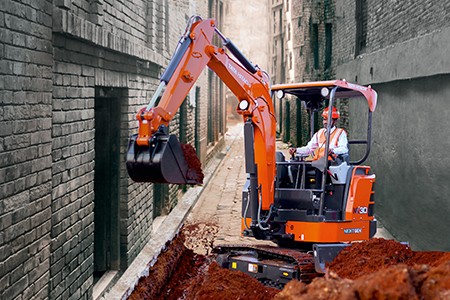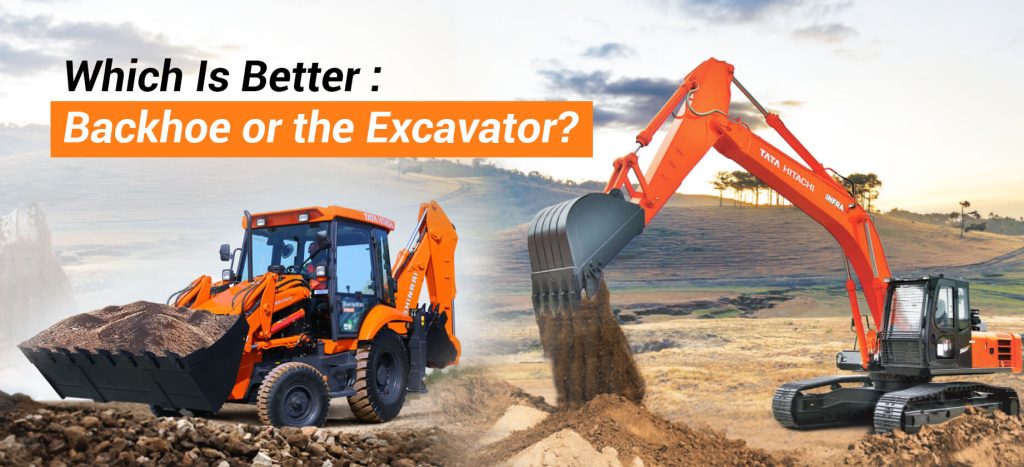
Backhoe Vs Excavator: Which One to Choose for Construction.
The construction sector increases GDP and gross capital creation for the country and offers opportunities for investment in related industries. In the world of heavy construction equipment, excavators and backhoe loaders are the torchbearers. They are the most widely used heavy equipment in the construction industry. While the majority of duties may be completed by either of these machines, some glaring distinctions between the two should be considered before using or purchasing either piece of equipment for a job site.
What Is the Difference Between a Backhoe and an Excavator?
Although backhoes and excavators have many similarities, they also have three key differences that significantly affect the appropriateness of equipment for a certain job. Below listed are the key differences between a Backhoe Loader and Excavator:
1. Size: The size difference is the main distinction between excavators and backhoes. Backhoes are often smaller and lighter than excavators, which makes them more maneuverable. Although backhoes are smaller than excavators, they are nonetheless perfect for a variety of operations, such as:
- Framing
- Medium-scale construction
- Medium-scale excavation
- Loading
- Snow removal
2. Rang of Rotation: Backhoe excavators have a less range of motion than excavators, which can spin around 360 degrees. Typically, a backhoe can only rotate the loader arm by roughly 200 degrees. For operators, this distinction is quite important. Time is saved because an excavator’s range of rotation prevents the need to constantly adjust the machine.
3. Versatility: Excavators and backhoes are both incredibly adaptable machines since they can be equipped with a wide variety of attachments. However, the backhoe offers a wider selection of attachment possibilities. Backhoe Loaders are a combination of Loaders and Excavators. It has a backhoe machine on the rear and a shovel/bucket in the style of a loader on the front.
4. Mobility: Backhoe excavators offer the benefit of mobility. They may be driven up to 25 miles per hour on public highways because they are wheeled vehicles that are smaller than the excavator. If they need to be relocated between job locations, this is very helpful.
Backhoe vs. Excavator – Which is right for your job?

Even though it might be challenging to distinguish between a backhoe and an excavator, there are three key differences between the two: size, adaptability, and rotation. It is critical to select the appropriate machine for your project since these elements make each machine suitable for various jobs.
When deciding whether an excavator or backhoe is the better choice for your project, there are a few things to consider:
- Your machine should be the appropriate size for the scope of your job. You are probably better off using an excavator if working on large-scale construction, excavation, or a demolition project when sheer mechanical power is crucial. You could think about utilizing a backhoe if your project has a more moderate scale.
- Excavators have more strength than backhoes. Particularly more strength for digging and tearing down. Use them for the most demanding tasks. For medium-sized projects, use a backhoe, and for smaller ones, a mini excavator.
- The backhoe has the benefit of being able to move about a construction site with ease. Using a backhoe will be simpler if your project is spread out and you need to finish a project spanning several locations.
- There are certain jobs that can be completed with either a backhoe or an excavator, like excavating, but there are those that truly only work with any one type of equipment. Make sure the equipment you purchase is adequate by considering the unique jobs and attachments your project will require.
What are the Applications of Excavators Over Backhoe Loaders?
Excavator:
For the majority of construction projects, excavators are a crucial piece of heavy machinery. Hydraulic excavators, often known as diggers, are tools used for a variety of tasks, including material handling, river dredging, demolition, landscaping, and building. An excavator’s whole cab rotates 360 degrees atop its undercarriage, unlike a backhoe: one of the most noticeable distinctions. Opposite the digging arm, most wheeled and mini excavators also have a dozer blade connected.

The excavator, like the backhoe, has a variety of attachments that enable it to do jobs apart from simple diggings: such as heavy-duty drilling and demolition. In forestry operations, excavators are frequently combined with attachments for cutting bush.
You can use a hydraulic excavator for heavy-duty, industrial jobs, such as:
- Demolition projects
- Drilling shafts
- Rock blasting
- Driving piles
- Mining

An excavator may use a range of attachments to carry out a number of activities in addition to digging. For example, the installation of bush-cutting attachments to an excavator allows it to be employed in forestry operations.
Backhoe Loader:
A backhoe loader is a large construction machinery that comprises a tractor-like unit with a backhoe machine on the rear and a shovel/bucket in the style of a loader on the front. It is a combination of loaders and hydraulic excavators.
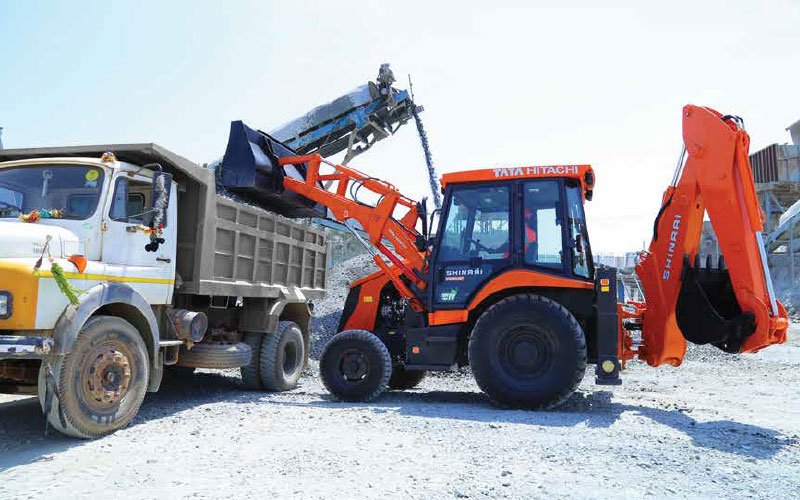
A Backhoe excavator machine can do a massive variety of tasks. The seat may be turned 360 degrees so that the operator can face the side that is currently being utilized. The component that supports the bucket of the digger is known as the dipper or arm, and the portion of the backhoe arm that links to the tractor is known as the boom. There is a wide variety of attachments available for a backhoe. The front loader can also be attached with various brooms, plows, and forklifts. A backhoe can occasionally even act as a crane by crossing the straps of an object being hoisted over the dipper stick.
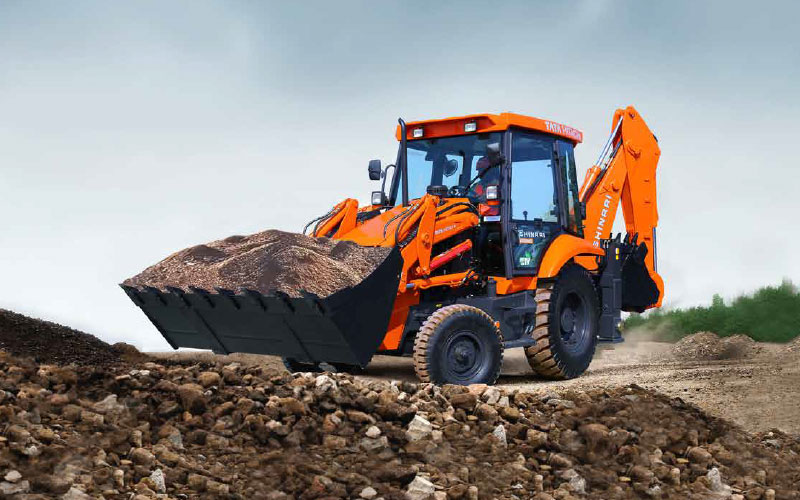
On the other hand, backhoes are lighter, more flexible, and better suited for jobs like:
- Medium-scale construction
- Medium-scale excavation
- Snow removal
- Loading
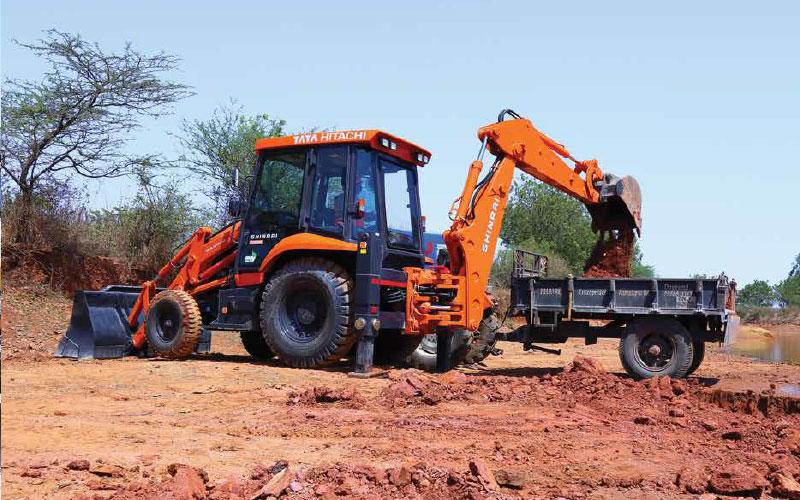
The backhoe excavator is an extremely useful piece of farm equipment since it has all of these features and more.
Excavators and backhoes are common tools on construction sites. They both serve the same function of digging and excavating. Still, you may choose the one that is ideal for your particular needs based on variations in size, range of rotation, and adaptability.
Recent Articles

March 28, 2024.
Unearthing the Power of Excavators: A Comprehensive Guide to Types and Applications
Unearthing the Power of Excavators: A Comprehensive Guide to Types and Applications Excavators have revolutionized the construction and mining industries,Continue Reading
Read more →
March 28, 2024.
Enhancing Excavator Efficiency: A Comprehensive Guide to Excavator Attachments
Enhancing Excavator Efficiency: A Comprehensive Guide to Excavator Attachments Excavators are strong equipment used extensively in building, mining, and otherContinue Reading
Read more →
March 28, 2024.
Excavators: Powerful Machine for Efficient Earthmoving and Safety Tips
Operating an excavator requires skill, knowledge, and by implementing essential excavator safety tips, excavator operators can maximize productivity.
Read more →
